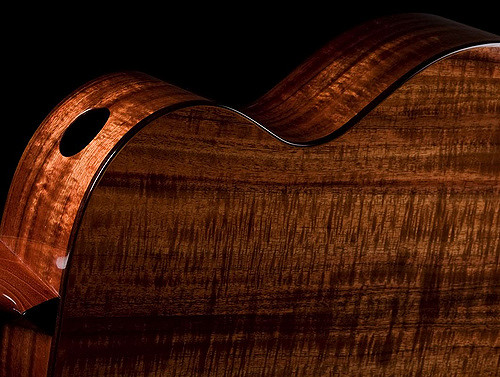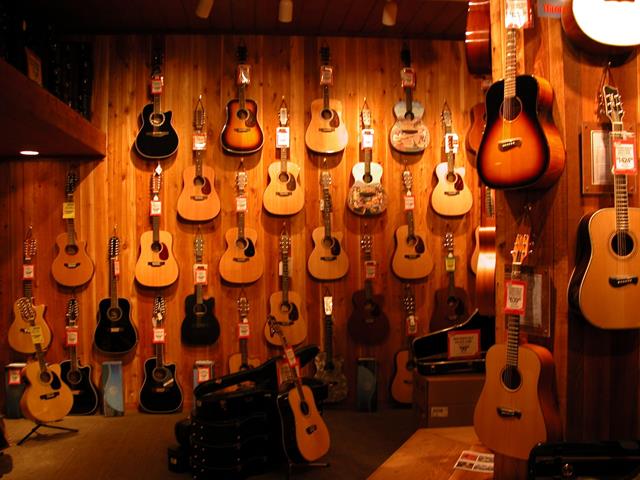The world is full of strange things. Most of these strange things are made by nature and freak us out every time we see them or think about. And yet we study these things. We closely observe the tiny tardigrades to understand the extent of and the reason for their immortality. We study spiders, their venom and their silk, in hopes of understanding how to make them. And we closely observe all of Australia, because let’s be honest, most of that continent is a little freaky. I mean the place has a Platypus, a mammal with duck’s bill that lays eggs and has a venomous spike on the end of its tail? Kangaroos? Koalas? The biggest concentration of poisonous snake species? Bogans? I mean come on that place is freaky. Which is why I want to visit it so much. I’d like to observe the weirdness in its natural habitat. Yet a very large (surprisingly large) percentage of freakiness in the world is man made. Even before the internet, the repository of all of human weirdness, we were weird. This can be seen even in the strange and unique instruments humans have made over the past few centuries.

While saying the past few centuries, I do mean that most of these instruments were made recently. This does not take away from the strangeness of the instruments. Whether it is the materials they are made of, or the techniques used to make them playable, these instruments are unique. They are also very interesting to look at and wonder at. Most of them are either variations on traditional instruments or interesting innovations that, about one hundred and thirty years ago would have been deemed impossible
Let’s take a look and see what these instruments are and what makes them so unique.
The Blackbird (Stone Violin)
The first instrument we are going to take a look at is a little on the romantic side. After all, I am a romantic at heart (my girlfriend disagrees) who believes that the most beautiful things are the most romantic ones. And what is more romantic than a Violin?
Well, apparently a violin made of stone. This idea is a little hard to grasp to those who understand how a violin works. On the other hand it is also kind of obvious. I mean if you are making an instrument out of wood, why not also try making it out of stone?
A swedish artist Lars Widenfalk had the very same thought. Probably mostly because his craft involves shaping things out of stone (he is a sculptor, if you didn’t guess). The man decided that wood was not the only material privileged enough to have things made out of it. The idea came to him when he was on working on decorations for a Norwegian building. He was working at the time on Diabase rock. This type of rock has a tendency to vibrate at different frequencies producing different types of sound.
He decided to go full on metal with the construction of the violin and picked a black diabase rock. To be even more metal he decide to make the violin out of his grandfather’s gravestone. Maybe he was also hoping that the grandfather would enhance the sound a little from beyond the grave? Spooky, I know, but still kind of metal.
The stone was extremely black and beautiful. He set to construction according to Antonio Stradivari’s designs. Yes, the famous Stradivarius. After a while of working he had produced a Black Stone Violin called Blackbird after the common blackbird. The violin has a 2.5 mm thick sound box, to keep the instrument light and easy to hold. The exterior of the violin is gilded with gold. The fingerboard is made of high quality ebony. The bridge is saddled with a mammoth’s bone straight from Siberia. The man did not waste any money making this instrument, as you can tell.
Unfortunately, while the violin’s construction is entirely romantic and beautiful, the sound it produces is rather flat. Because of this it cannot perform music written for normal violin. Instead special music had to be written for it. So much effort for an instrument that can’t even produce beautiful music. What a shame.
But still, look at this beauty.

Glass Harmonica
Let’s move on from instruments that struggle to work to instruments that actually do their job well and were invented not for the sake of sculpture, but for the sake of music. One of such is the Glass Harmonica.
This instrument is infinitely interesting. Also known as the Glass Armonica, Glass Harmonium, the Bowl Organ, and the Hydrocrystalophone, this instrument is beautiful both in make and sound. While the classical harmonica is played by blowing air through holes onto a reed, the glass harmonica operates a little differently. There is a spinning shaft at the middle of it all. On top of this shaft there are several glass bowls attached, each of different size. The player would put a finger onto one of the spinning bowls, much like on a crystal bowl. As a result the glass starts to vibrate and produce sound. The size of the glass determines the frequency and thus the pitch. As a result you get a musical instrument that sounds very much like a harmonica, yet has a more haunting quality to it.
The instrument was actually invented by Benjamin Franklin in 1761. The man was a genius inventor, so do not be too surprised about that. Some of you might find it interesting that the Glass Armonica (as Benjamin Franklin called it) was invented so long before the now commonly known free reed harmonica.
The instrument’s popularity did not last long after the 18th century. Rumours were spreading at the time that the repeated use of the instrument actually caused madness in the musicians and the listeners alike. While I am not sure how true this is, the ghostly sound of the harmonica does seem haunting. Yet I would not mind listening to it on a regular basis at all.
Hydrauloponeh
While it might seem that the Glass Harmonica is the clearest instrument to produce sound, there is nothing clearer, musically speaking, then water. Yes, there are instruments that use water as the primary musical medium. The Hydrauliponeh is one such instrument. Also referred to as the water organ, for the similarity of sound, this curious instrument is one of my favorites.
Water is the medium of choice for the instrument. The construction of the Hydrauloponeh is very similar to that of the pipe organ, except for the absence of reeds within pipes. The idea goes as such: there is main pipe through which water passes. This pipe has several holes with water escaping through them. Blocking one of the holes prevents the water from escaping and redirects it to a mechanism which, in turn, produces sound. Quite creative, really.
The sound produces is similar, if a little more dull, than that of a traditional wind pipe organ. You will see more and more of this instrument around the world as it becomes a novelty to everyone. Fun times, all around!
Take a look at this video to hear what one sounds like and how it works.
Zuesaphone
If you think that bending elements for the sake of producing sound is an amazing achievement, then let me introduce you to an instrument that will make you giddy with excitement. It certainly did that to me when I found out. Water is nothing when compared to the use of electricity to play music. The Zeusaphone, named after the ancient Greek God of Thunder Zeus, is an instrument of complex construction. It involves Tesla coils, programming and a lot of safety precautions, which are all worth it when listening to this fascinating instrument.
Sometime in 2007, when the electronic music culture was still underground but on the rise in the United States, an electrical engineering student thought of an idea. He decided that he would present at DucKon a singing Tesla Coil. Steve Ward designed and built one and programmed a song into it. He presented it and the performance went live. He took the idea of electronic music to the next level by using actual electricity to produce sound. Even since then the musical instrument became more or less a novelty and a popular item to discuss.
Popular culture has embraced the instrument in its entirety over past few years. Bjork used it in her performance at one point or another. The movie the name of which I shall not mention (Editor’s Note: the Sorcerer’s Apprentice) used it as a prop. It has even made its way into the EDC world. In 2015 it a DJ used it as the main instrument for his performance. Fun times really!
The most impressive part of the instrument is watching it actually play. Electricity going all around, it produces a sound every metal head would be proud to call its own. Here, take a look at an appropriate song yourself:
This concludes the list of strange and unique instruments from around the world. Here is a quick thing I’d like to mention: this world is very big and has a long history and of being inhabited by large amount of very interesting and strange people. As a result this world is full of incredibly interesting instruments. There are dozens and dozens of musical instruments that will astound you. Keep an eye out, if you see anything tell us. I will keep an eye out too, so watch out for future posts about interesting musical instruments.






